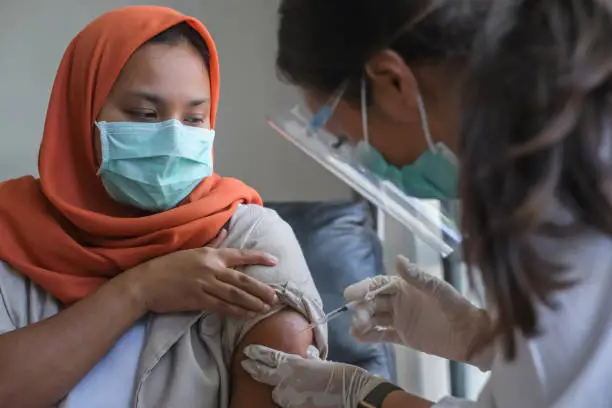Navigating the complex world of grant writing for healthcare organizations can be daunting. Whether you’re part of a fledgling health clinic or a well-established hospital, securing funding through grants is crucial for enhancing service delivery and supporting vital community health initiatives.
In this blog post, we’ll explore effective strategies for crafting successful grant proposals, highlight essential resources, and offer practical advice to maximize your chances of securing funding. Our aim is to demystify the process and provide you with the tools you need to succeed in the competitive realm of healthcare funding.
Understanding Healthcare Grants
Firstly, it’s essential to understand what healthcare grants are. These are non-repayable funds provided by governments, foundations, or corporations designed to support health services. Funding can range from small amounts for community projects to substantial support for large-scale health interventions.
Healthcare grants play a pivotal role in facilitating medical research, supporting public health initiatives, and improving patient care services. They are instrumental in launching new programs that address critical health issues such as chronic disease management, mental health support, and preventive care strategies.
When exploring healthcare grants, it’s crucial to identify the type of grant that aligns with your organization’s needs. There are project-specific grants, which fund particular health programs or initiatives. Operational grants, on the other hand, provide broader support for an organization’s overall functions and services. Additionally, research grants are dedicated to supporting scientific studies and innovations in healthcare that can lead to significant advancements in treatment and patient care.
Navigating the landscape of healthcare grants requires a strategic approach. Start by conducting thorough research to understand which grants are the most relevant for your projects. Utilizing grant writing resources such as online databases and grant-writing workshops can also provide you with the tools and knowledge necessary to successfully apply for and secure these funds.
It’s also important to connect with potential funders directly. Building relationships with grant officers and participating in grantee networks can provide insider insights into what funders are looking for and increase your chances of success. By staying informed about the latest funding opportunities, your healthcare organization can better position itself to take advantage of grants that will enhance its ability to serve the community effectively.
Understanding and effectively navigating the world of healthcare grants can open up numerous possibilities for advancing your organization’s objectives and making a substantial impact on public health.
Identifying Funding Opportunities
To start, you need to identify the right funding opportunities. This involves researching and matching your healthcare organization’s needs with potential funders. Websites like Grants.gov and the Foundation Center are invaluable grant writing resources for finding relevant federal and private funding options.
Identifying the right funding opportunities requires a keen understanding of both your organization’s needs and the priorities of potential funders. Begin by conducting a thorough assessment of your organization’s projects and the impact they aim to achieve. This step ensures that you seek grants that align closely with your objectives and the measurable outcomes you can deliver.
The next step is to expand your research beyond general databases. Look into specialized databases and funding lists that cater specifically to healthcare sectors, such as those focusing on mental health, pediatric care, or medical research. Engage with professional networks and associations related to healthcare funding; these can be treasure troves of information and may offer notifications about lesser-known or highly specific grants.
Building a good relationship with funders is also critical. Attend funding fairs and schedule meetings with potential donors to discuss your projects and understand their funding cycles and criteria. Personal connections can provide deeper insights into what funders are looking for in successful applications and can alert you to upcoming funding opportunities before they are widely advertised.
Additionally, keep an eye on the political and economic landscape. Changes in government policies or health priorities can open up new funding channels. Being proactive and adaptable in response to these changes can position your organization at the forefront of new funding opportunities.
By diligently following these strategies, you not only enhance your chances of finding relevant grants but also position your organization as a credible and attractive candidate for substantial funding support.
The Grant Application Process
Understanding the grant application process is critical. Each grantmaker typically has its own application process, but common elements include a letter of inquiry, a detailed proposal, and supporting documents such as budgets and letters of support.
The grant application process can be daunting, but with a structured approach, it becomes more manageable. Begin by carefully reading the grant guidelines provided by the funder. These guidelines will detail exactly what is required for the application, including specific forms, necessary documentation, and the deadline for submission. It’s essential to adhere to these guidelines meticulously to avoid disqualification.
A typical first step in the application process is to submit a Letter of Inquiry (LOI). This is a concise document that introduces your organization, outlines your project, and explains the need for funding. Think of the LOI as your opportunity to make a strong first impression; it should be compelling and well-written, clearly stating how your project aligns with the funder’s objectives.
Following the LOI, if the funder is interested, they will request a full proposal. This proposal should provide a detailed description of the project, including its goals, methodology, staffing, and the specific outcomes you anticipate. The proposal should also include a comprehensive budget that is justified in the narrative. The budget should clearly illustrate how every dollar will be spent in pursuit of the project’s objectives.
Supporting documents might include letters of support from community leaders, evidence of your organization’s tax-exempt status, financial statements, and biographies of key project personnel. These documents help to build credibility and trust with the funder.
Throughout the grant application process, it’s important to maintain communication with the grantmaker. Be responsive to any requests for additional information and be proactive in providing updates if there are significant developments in your project.
Always review your application multiple times before submission to ensure it is complete and error-free. Having another set of eyes—perhaps a colleague or a professional in grant writing—review the application can help catch any issues that could undermine your application’s success.
Writing Successful Grants
To write successful grants, start with a compelling executive summary, as this is often the first section reviewers will read. It should capture the essence of your proposal, highlighting the urgency of the need, the innovation in your approach, and the impact the funding will have. Make it concise and powerful.
An organizational background section is crucial as it establishes the credibility and capacity of your organization. Here, detail your organization’s history, mission, and key accomplishments. Highlight any previous successful projects, especially those relevant to the current grant proposal. Demonstrate your expertise and experience in handling projects and funds, which reassures funders that their investment is in capable hands.
The need statement is where you justify the necessity of your project. Use data and research to back up your claims about the existing problem. This could include statistics on the health issue your project addresses, testimonials from community members, or citations from relevant studies.
The goals and objectives section should clearly articulate what your project aims to achieve. Goals are broad statements of what you hope to accomplish, while objectives are specific, measurable actions you will take to reach those goals. For example, if the goal is to improve healthcare access in rural areas, an objective might be to increase the number of mobile health clinics by 20% within one year. This section should align closely with the funder’s priorities, showing how your project will contribute to their overarching goals.
In the project description, detail the activities that will be implemented to achieve the goals. Be clear about the timeline and the logical flow of these activities. This section should demonstrate your team’s understanding and capability to manage and execute the project effectively.
The budget section must be precise. Funders want to see exactly how their money will be used. Itemize expenses in categories such as personnel, supplies, and administrative costs, and justify why each expense is necessary for the project’s success.
The evaluation section should outline measurable outcomes to assess the project’s impact. Describe the methods you will use to track progress and evaluate effectiveness. This not only shows your commitment to accountability but also helps in making your case for future funding.
A sustainability plan is essential to show the grantor that your project will continue to have impact beyond the life of the grant. This could involve outlining strategies for future funding, partnerships that could support ongoing operations, or a plan to become self-sustaining through revenue-generating activities. Demonstrating long-term viability is key to assuring funders that their investment will yield prolonged benefits.
Throughout your grant proposal, maintain a tone that is professional yet approachable. Use clear, concise language that anyone—not just experts in the field—can understand. Remember, the goal is to make your reader believe in your project as much as you do.
Leveraging Federal Healthcare Funding
For those looking into federal healthcare funding, it’s essential to comply with strict regulatory requirements. Familiarize yourself with federal grant policies and ensure your organization meets all compliance criteria.
Leveraging federal healthcare funding effectively requires a thorough understanding of the various grant programs available through government agencies. These agencies, such as the Department of Health and Human Services (HHS), the National Institutes of Health (NIH), and the Centers for Disease Control and Prevention (CDC), offer substantial financial support for a range of health-related initiatives. Each agency has its focus areas and eligibility criteria, which you should study carefully to align your application accordingly.
To successfully tap into federal funding, start by regularly checking government portals like Grants.gov, where all federal grants are listed. This will help you stay updated on new funding opportunities and deadlines. Utilize the advanced search features to filter opportunities by agency, eligibility, or health focus area, ensuring you only spend time on grants that perfectly match your organization’s mission and capabilities.
It’s also beneficial to engage in grant writing training specifically focused on federal proposals. Federal grants often require a higher level of detail and adherence to specific formatting rules. Training or workshops can provide you with insights into the complexities of federal grant applications, including how to navigate the often rigorous and technical reporting requirements.
Building relationships with federal grant officers can also be incredibly advantageous. Reach out to them with questions about the application process or to seek advice on making your proposal more effective. These relationships can provide valuable insights and help you understand the priorities and nuances of the funding agency.
When applying for federal grants, be meticulous in following the application instructions. Every detail from the narrative to the budget must align with the grant announcement. Be clear, concise, and thorough in describing how your project meets the funding priorities and how it will be implemented effectively.
Frequently Asked Questions
FAQ 1: What are the key components of a successful healthcare grant proposal?
Response: A successful healthcare grant proposal typically includes a clear executive summary, a compelling need statement, a detailed project description, specific goals and objectives, a comprehensive budget, and a strong sustainability plan. Additionally, it should provide an organizational background to establish credibility and an evaluation plan to measure the project’s impact.
FAQ 2: How do I find the right healthcare grants for my organization?
Response: Begin by identifying your organization’s specific needs and project goals. Use databases like Grants.gov and the Foundation Center to find grants that align with your objectives. Consider both general healthcare grants and those targeted towards specific areas like mental health or pediatric care. Regularly updating your knowledge of available grants and networking with others in the field can also uncover new opportunities.
FAQ 3: What common mistakes should I avoid when applying for healthcare grants?
Response: Common mistakes include failing to follow the funder’s application guidelines, submitting proposals with unclear goals or unrealistic budgets, and overlooking the importance of a detailed evaluation plan. Additionally, not proofreading your application for errors or failing to tailor the proposal to the specific funder can significantly decrease your chances of success.
FAQ 4: How can I ensure the sustainability of my project after the grant period ends?
Response: To ensure sustainability, develop a clear plan that includes diverse funding sources such as future grants, partnerships, or revenue-generating activities. Also, consider building strong community and stakeholder relationships that can support ongoing efforts. Documenting and sharing the success and impact of your project can attract further support and prove your project’s value to potential funders and partners.
Conclusion
Mastering the art of grant writing is essential for any healthcare organization looking to make a significant impact. As we’ve explored in this post, understanding the nuances of the grant application process and utilizing strategic writing techniques can greatly enhance your chances of securing crucial funding. To further develop your skills and knowledge in this field, consider investing in our comprehensive range of grant writing books and nonprofit management resources. These tools are designed to elevate your expertise and help you navigate the complexities of grant funding with confidence.
For those who seek more personalized guidance, we offer exclusive mentorship through our Grant Writing Academy. Our programs are tailored to meet your specific needs, whether you’re just starting out or looking to refine your skills. Choose from three tiers of mentorship: a 3-month program for $500, a 6-month option for $800, or our extensive one-year program for $1,300. Each of these options provides dedicated support to help you achieve your grant writing goals.
If you’re ready to take your grant writing and nonprofit management abilities to the next level, don’t hesitate to sign up for our Grant Writing Academy Mentorship programs. Simply send an email with “Mentorship” as the subject line to grantwritingacademyconsult@gmail.com, and we’ll guide you through the next steps.
Embark on your journey to success with our expert resources and personalized mentorship. We are here to support you in securing the funding your organization needs to thrive and make a lasting difference in the healthcare sector.
Recommended Books for Enhancing Grant Writing Skills
To further enhance your grant writing skills and stay on top of these trends, consider diving into some insightful literature.
Here are a few recommended books:
- Advanced Grant Writing for Nonprofits : Focuses on sophisticated techniques for experienced grant writers. It delves into complex aspects of proposal development, offering strategies for dealing with competitive grant environments and large funding bodies.
- Crafting Nonprofit Annual Reports that Captivate: Strategies, Tools, and Examples for Success: This book offers a comprehensive guide for nonprofit organizations aiming to create impactful annual reports. It covers effective strategies, essential tools, and real-world examples to help organizations narrate their achievements and challenges compellingly. The guide emphasizes storytelling, visual communication, and stakeholder engagement, ensuring readers can produce reports that not only fulfill compliance requirements but also captivate and inspire donors, volunteers, and the community at large.
- The Ultimate Guide to Federal Grant Applications: Techniques for Success: Navigating the complexities of federal grant applications can be daunting for many nonprofits. This essential guide demystifies the process, offering step-by-step techniques for success. It covers everything from understanding eligibility criteria to crafting persuasive proposals, managing submissions, and complying with reporting requirements. The book is designed to help nonprofit professionals maximize their chances of securing federal funding by providing practical tips, checklists, and examples of successful applications.
- Nonprofit Strategic Planning : Strategic planning is crucial for the growth and sustainability of any nonprofit organization. This book serves as an invaluable resource for leaders and managers looking to develop and implement effective strategic plans. It covers the fundamentals of strategic planning, including goal setting, environmental scanning, strategy formulation, implementation, and evaluation. Through practical advice, tools, and case studies, readers will learn how to align their organization’s mission with its strategic goals, ensuring long-term success and impact.
- Mastering Grant Writing: A Nonprofit’s Guide to Effective Proposal Development and Submission: This book serves as a comprehensive guide, covering the entire process of grant writing. It includes tips on understanding funders’ perspectives, crafting compelling narratives, and the nuances of proposal submission.
- Becoming the Grant Guru: Freelancer’s Guide to Success : Tailored for freelance grant writers, this book provides insights into building a successful career in grant writing. It includes strategies for finding clients, managing projects, and maximizing the impact of grant proposals.
- The Small Business’s Guide to Winning Grants : This resource is particularly useful for small businesses looking to secure grants. It offers practical advice on identifying suitable grant opportunities, understanding the requirements of small business grants, and crafting winning proposals.
- Grant Readiness Guide: Preparing to Triumph in Funding Opportunities : A comprehensive resource for organizations at various stages of grant preparedness. It provides a roadmap for developing organizational capacity, aligning projects with funders’ goals, and creating compelling applications.
- Her Capital: Unlocking Women’s Small Business Grants: Specifically designed for women entrepreneurs, this book offers guidance on navigating the landscape of small business grants for women. It includes insights into grant sources, application strategies, and tips for leveraging grants to grow a business.






